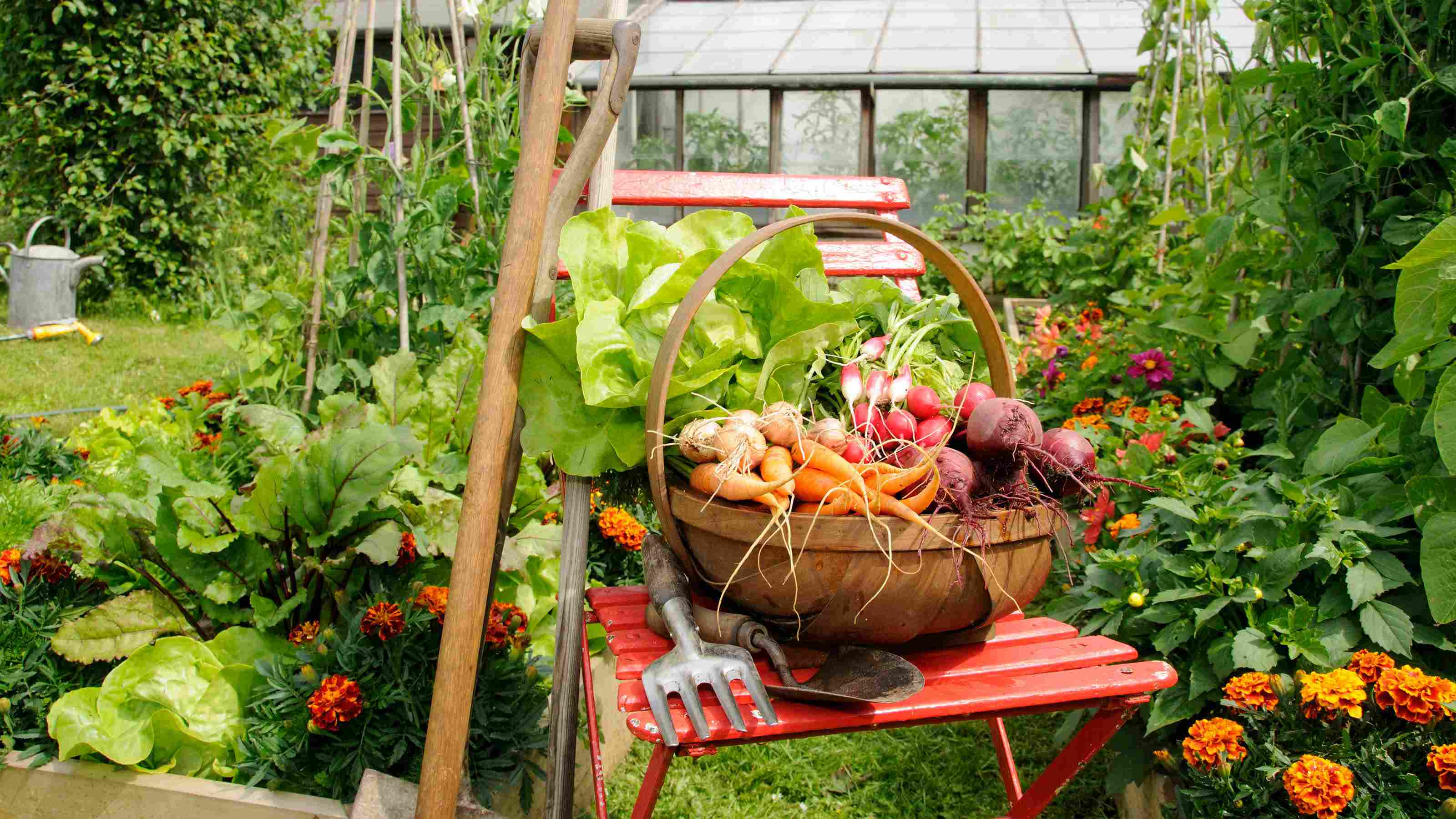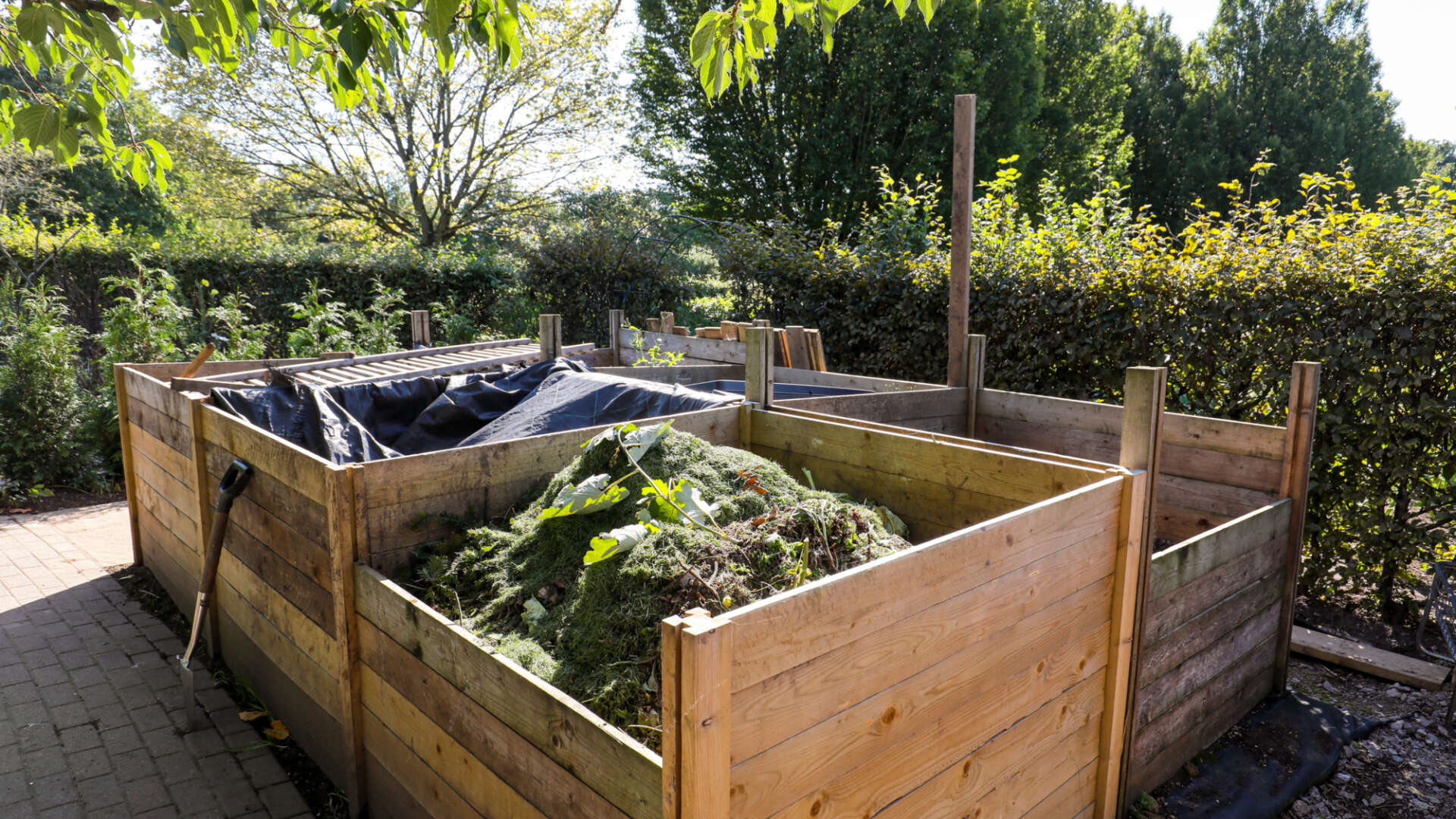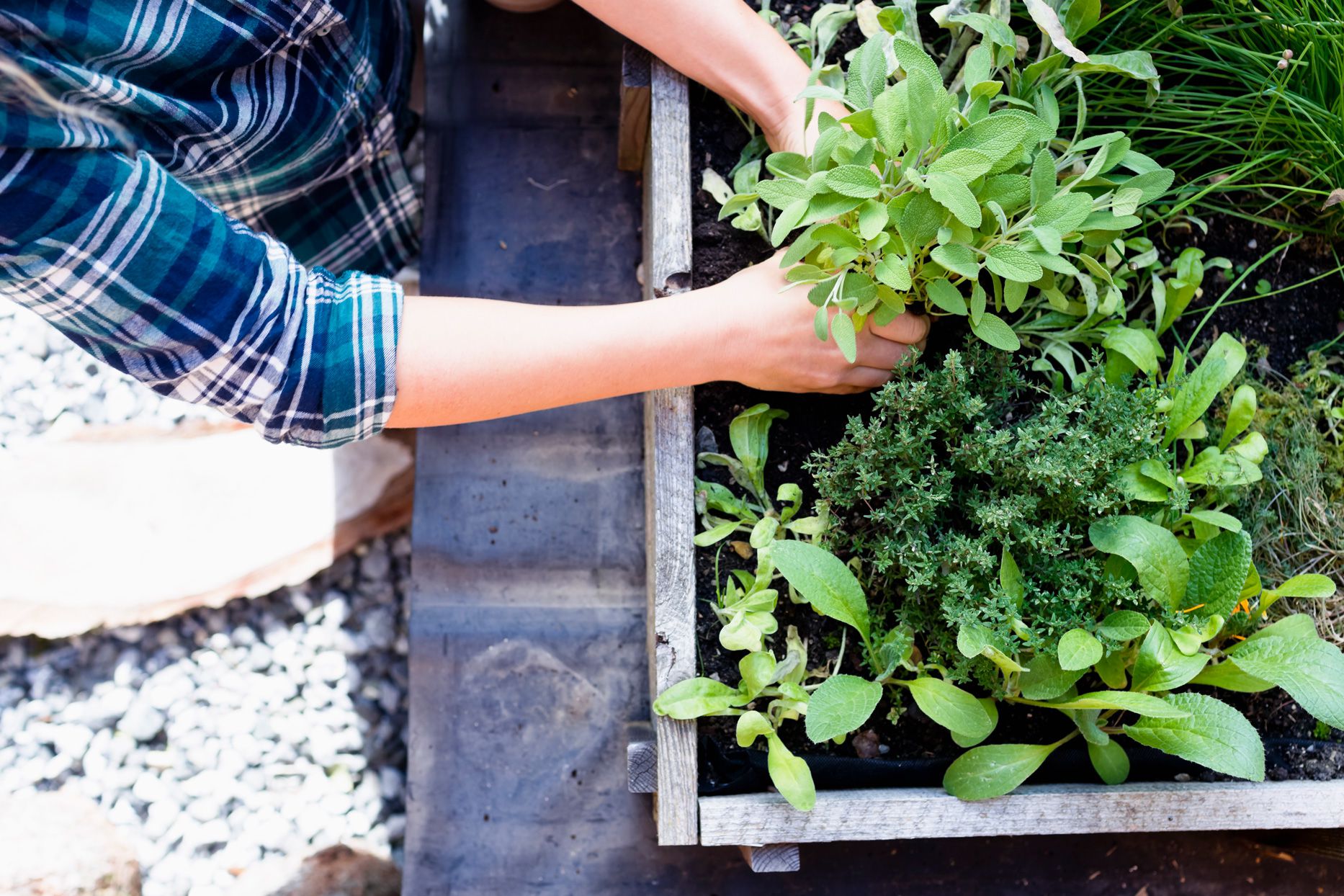Home>Types of Gardening>Edible Gardening>How To Garden Vegetables


Edible Gardening
How To Garden Vegetables
Modified: January 22, 2024
Learn how to grow your own vegetables with our edible gardening tips. Get expert advice on planting, caring for, and harvesting a variety of delicious homegrown produce.
(Many of the links in this article redirect to a specific reviewed product. Your purchase of these products through affiliate links helps to generate commission for Chicagolandgardening.com, at no extra cost. Learn more)
Table of Contents
Introduction
Welcome to the world of edible gardening! Whether you have a big backyard or a small balcony, growing your own vegetables can be a rewarding and fulfilling experience. Not only does it provide you with fresh and delicious produce, but it also allows you to connect with nature and understand the process of food cultivation.
Edible gardening is a practice that has been around for centuries and is gaining popularity in recent years. People are realizing the importance of knowing where their food comes from and are opting to grow their own vegetables instead of relying solely on store-bought produce. Additionally, there is something truly special about being able to walk outside and harvest your dinner straight from your garden.
But where do you begin? The world of edible gardening can seem overwhelming, with so many different vegetables to choose from and various techniques to master. Fear not, as this comprehensive guide will provide you with all the information you need to start your own productive and thriving vegetable garden.
Throughout this article, we will explore everything from selecting the right vegetables for your garden to preparing the soil, planting, watering, fertilizing, and dealing with common garden pests. By the end, you will have a solid foundation of knowledge to embark on your own edible gardening journey.
Whether you are a beginner or have a green thumb, this guide can serve as a valuable resource. So, grab your gardening gloves and let’s dive into the wonderful world of edible gardening!
Choosing the Right Vegetables for Your Garden
When it comes to edible gardening, one of the most important decisions you’ll need to make is selecting the right vegetables for your garden. Factors such as climate, available space, and personal preference should all be taken into account. Here are some tips to help you choose the perfect vegetables for your garden:
- Consider your climate: Different vegetables thrive in different climates. Before choosing your vegetables, research the specific requirements for your region. Make note of the average temperature, frost dates, and length of the growing season. This information will help you determine which vegetables will perform best in your area.
- Assess available space: Take a look at your garden space and assess how much room you have. Some vegetables, like tomatoes and zucchini, require more space to grow, while others, like lettuce and herbs, can be grown in smaller containers or as a part of a vertical garden. Plan accordingly so that each vegetable has sufficient space to grow and flourish.
- Consider your preferences: Think about the vegetables you and your family enjoy eating the most. Gardening is much more enjoyable when you get to reap the rewards of your hard work by eating the vegetables you love. Consider growing a mix of vegetables that can be eaten raw, cooked, or preserved for future use.
- Explore different varieties: Within each vegetable category, there are often multiple varieties to choose from. For example, tomatoes come in different sizes, colors, and flavors. Experiment with different varieties to find the ones that are best suited to your palate and growing conditions. Check with your local nursery or seed catalogs for a wide variety of options.
- Timing is important: Some vegetables, like lettuce and radishes, have a shorter growing season and can be harvested within a few weeks. Others, like tomatoes and peppers, take longer to mature. Consider the time and effort you’re willing to invest in your garden and choose vegetables that align with your timeline.
Remember, gardening is all about experimentation and learning from experience. Don’t be afraid to try new vegetables and adjust your choices based on your observations and results. By choosing the right vegetables for your garden, you’ll set yourself up for a successful and bountiful harvest.
Preparing the Garden Bed
Before you start planting your vegetables, it’s crucial to prepare the garden bed. This process ensures that your plants have the best possible environment to grow and thrive. Here are some essential steps to follow when preparing your garden bed:
- Clear the area: Begin by removing any weeds, rocks, or debris from the garden bed. This will help create a clean and organized space for your vegetables.
- Improve the soil: The quality of your soil plays a vital role in the success of your garden. Assess the soil and make any necessary improvements. If the soil is heavy and clay-like, add organic matter such as compost or well-rotted manure to improve drainage and nutrient content. If the soil is sandy and drains too quickly, add organic matter to improve water retention. Aim for a loose, crumbly texture that allows roots to penetrate easily.
- Test the soil pH: Different vegetables have different pH preferences. Use a soil testing kit to determine the pH level of your garden bed. Most vegetables prefer a slightly acidic to neutral pH range of 6.0 to 7.0. If your pH is too high or too low, you can amend the soil accordingly. For example, adding lime will raise the pH, while sulfur will lower it.
- Amend the soil nutrients: Besides pH, plants require essential nutrients for healthy growth. Conduct a soil test to assess the nutrient levels in your garden bed. Based on the results, you can add organic fertilizers or mineral amendments to provide the necessary nutrients. Organic options like compost, well-rotted manure, and bone meal are excellent choices. Avoid using synthetic fertilizers, as they can harm beneficial organisms in the soil.
- Level and prepare the bed: Ensure that the garden bed is level and smooth before planting. Use a rake or garden fork to break up any large clumps of soil and create a fine, even surface. This will make it easier to sow seeds or transplant seedlings.
By taking the time to properly prepare your garden bed, you are setting the stage for healthy plant growth and abundant harvests. Investing effort in this initial step will pay off throughout the growing season, as your vegetables will have access to the nutrients and conditions they need to thrive.
Planting the Vegetables
Now that your garden bed is prepared, it’s time to plant your chosen vegetables. Follow these guidelines to ensure successful planting:
- Read the seed packet or plant tag: Different vegetables have different planting requirements regarding spacing, depth, and timing. Refer to the seed packet or plant tag for specific instructions. Pay attention to recommended planting dates, as some vegetables are best planted in spring, while others thrive in fall.
- Plan your layout: Consider the mature size of your vegetables and space them accordingly. Vegetables that require a lot of sunlight, like tomatoes and peppers, should be placed where they will receive maximum sun exposure. Group together vegetables with similar watering and nutrient requirements for efficiency.
- Transplanting seedlings: If you’re planting seedlings instead of seeds, handle them with care. Dig a small hole slightly larger than the root ball and gently place the seedling in. Firm the soil around the base of the plant to provide stability and good soil-to-root contact. Water the seedlings thoroughly after planting.
- Sowing seeds: For direct-sowing seeds, follow the guidelines on the seed packet. Create furrows with the depth specified or use a dibber. Place the seeds at the appropriate spacing, cover them with soil, and gently firm the soil on top. Water gently to avoid displacing the seeds.
- Providing support: Some vegetables, like tomatoes, cucumbers, and peas, benefit from support structures as they grow. Install stakes, trellises, or cages at the time of planting to avoid damaging the roots later on. Proper support helps with airflow, prevents diseases, and makes harvesting easier.
- Water immediately: After planting, water the garden bed thoroughly to ensure the soil settles around the roots and provides initial hydration. This is especially important for seedlings to help them establish and reduce transplant shock.
Keep in mind that regular watering is crucial during the early stages of growth. Monitor the soil moisture and water as needed, providing enough moisture without overwatering. With careful planning and proper planting techniques, your vegetable garden will be off to a great start.
Watering and Fertilizing
Proper watering and fertilizing are essential for the health and productivity of your vegetable garden. Here are some important guidelines to follow:
- Watering: Consistent and adequate watering is crucial for vegetable plants. Here are some tips for efficient watering:
- Water deeply: Ensure that the water penetrates the soil to reach the roots. Shallow watering can lead to shallow root growth. Use drip irrigation, soaker hoses, or watering cans to deliver water directly to the base of the plants.
- Avoid overwatering: While it’s important to keep the soil moist, avoid overwatering, as it can lead to root rot and other diseases. Check the moisture level by inserting your finger into the soil. If it feels damp, hold off on watering until it starts to dry out.
- Water early in the day: Watering in the morning allows foliage to dry off during the day, reducing the risk of diseases caused by moisture sitting on the leaves for extended periods.
- Fertilizing: Providing adequate nutrients to your vegetable plants will ensure healthy and vigorous growth. Here’s how to properly fertilize:
- Use organic fertilizers: Organic fertilizers such as compost, well-rotted manure, and worm castings are excellent choices for enriching the soil. They release nutrients slowly and improve soil structure over time.
- Follow package instructions: If using commercial fertilizers, read and follow the instructions provided on the package. Avoid over-fertilizing, as it can lead to nutrient imbalances and burn the plants.
- Apply at the right time: Fertilize your vegetable plants at the appropriate times, such as before planting, during active growth, and when fruiting. This helps ensure a continuous supply of nutrients throughout the growing season.
- Consider foliar feeding: Foliar feeding involves spraying a diluted fertilizer directly onto the leaves. This method can provide quick nutrient uptake and address any deficiencies.
Remember that different vegetables have varying nutrient needs, so it’s important to research the specific requirements of the plants you are growing. Regularly monitoring soil moisture and nutrient levels will help you determine when and how much to water and fertilize your vegetable garden.
Managing Weeds and Pests
Weeds and pests can pose challenges to the health and productivity of your vegetable garden. Implementing effective management strategies is essential for maintaining a thriving garden. Here are some tips to help you manage weeds and pests:
- Weed management: Weeds compete with your vegetable plants for water, nutrients, and sunlight. Here’s how to keep them under control:
- Mulch your garden bed: Apply a layer of organic mulch, such as straw or wood chips, around your plants. Mulch helps suppress weed growth by blocking sunlight and reducing soil moisture evaporation.
- Regularly remove weeds: Inspect your garden bed regularly and remove any weeds as soon as you spot them. Be sure to pull out the entire weed, including the roots, to prevent regrowth.
- Use a hoe or hand tools: Use a hoe or hand tools to cultivate the soil between rows or in larger planting areas. This disrupts weed growth and helps to incorporate them into the soil, where they can decompose.
- Pest management: Pests can damage leaves, stems, and fruits of your vegetable plants. Here’s how to minimize their impact:
- Identify pests: Learn to identify common garden pests in your area. Look for signs of damage such as chewed leaves, holes, discoloration, or visible insects.
- Implement cultural practices: Encourage biodiversity by planting a variety of flowers and herbs that attract beneficial insects, such as ladybugs and lacewings, that can help control pest populations.
- Use physical barriers: Install row covers, nets, or fences to keep insects, birds, and larger pests away from your vegetable plants.
- Try organic pest control methods: Utilize organic pest control methods such as handpicking pests off plants, introducing beneficial insects, or using organic insecticides like neem oil or insecticidal soap.
It’s important to monitor your vegetable garden regularly for any signs of weed or pest infestations. Early detection and proactive management strategies will help minimize the impact on your plants. Regularly removing weeds and implementing pest control measures will maintain a healthier garden and improve the overall yield of your vegetables.
Harvesting and Maintaining Your Vegetable Garden
Harvesting your vegetables at the right time is crucial to ensure optimal flavor and texture. In addition to harvesting, ongoing maintenance of your vegetable garden is necessary for continued growth and productivity. Here are some essential tips for harvesting and maintaining your vegetable garden:
- Harvesting: Harvest your vegetables when they are at their peak ripeness. Here’s what you need to know:
- Refer to seed packets or plant tags: Follow the guidelines provided on seed packets or plant tags for specific harvesting instructions. This includes the number of days to maturity and indicators of readiness, such as color, size, and firmness.
- Handle with care: When harvesting, handle your vegetables with care to avoid damaging the plants. Use clean gardening shears or a sharp knife to cut the vegetables from the plant, or gently twist or pull them if they are easily detached.
- Harvest regularly: Harvest your vegetables regularly to encourage continual production. Some vegetables, like zucchini and beans, can become oversized and lose flavor if left on the plant for too long.
- Maintaining: Ongoing maintenance is necessary to ensure the health and productivity of your vegetable garden. Here’s what you need to do:
- Water consistently: Continue to monitor soil moisture and water your plants as needed. Consistent and even watering helps prevent stress and encourages optimal growth.
- Remove spent plants: Once a vegetable plant has finished producing, remove it from the garden bed. Clearing out spent plants helps prevent the spread of diseases and creates space for new plantings.
- Supporting and staking: As your plants grow, continue to provide support such as stakes, cages, or trellises. Regularly check and adjust the supports to ensure the plants are well-supported as they grow.
- Mulching: Maintain a layer of mulch around your plants to help suppress weeds, retain soil moisture, and regulate soil temperature. Renew the mulch as needed throughout the growing season.
- Monitor for pests and diseases: Regularly inspect your plants for any signs of pest or disease infestation. Promptly address any issues you find to prevent them from spreading and causing significant damage.
By harvesting your vegetables at the right time and maintaining your garden regularly, you’ll maximize the yield of your plants and ensure the continued health and productivity of your vegetable garden. Enjoy the fruits of your labor and the satisfaction of growing your own food!
Conclusion
Congratulations on completing this comprehensive guide to edible gardening! You are now equipped with the knowledge and understanding to start and maintain your own thriving vegetable garden. By following the tips and guidelines provided, you can enjoy the satisfaction of growing your own fresh and delicious produce.
Remember, edible gardening is a journey of learning and experimentation. Don’t be discouraged by any challenges that may arise along the way. Embrace the process and use it as an opportunity to deepen your understanding of plants and nature.
As you embark on your gardening adventure, continue to expand your knowledge and explore new techniques. Join gardening communities, attend workshops, and connect with fellow gardeners to exchange tips and ideas. The gardening community is incredibly supportive and can offer valuable insights and inspiration.
Furthermore, don’t forget to enjoy the fruits of your labor! Harvest your vegetables at their peak ripeness and savor the flavors of your homegrown produce. Share the joy and abundance with family and friends, and consider preserving any excess through methods such as canning, freezing, or drying.
Finally, always remember that gardening is a labor of love. It requires patience, dedication, and a connection with nature. Embrace the process, learn from your experiences, and appreciate the beauty and nourishment that a vegetable garden brings.
Now go forth and create your own little slice of edible paradise!






